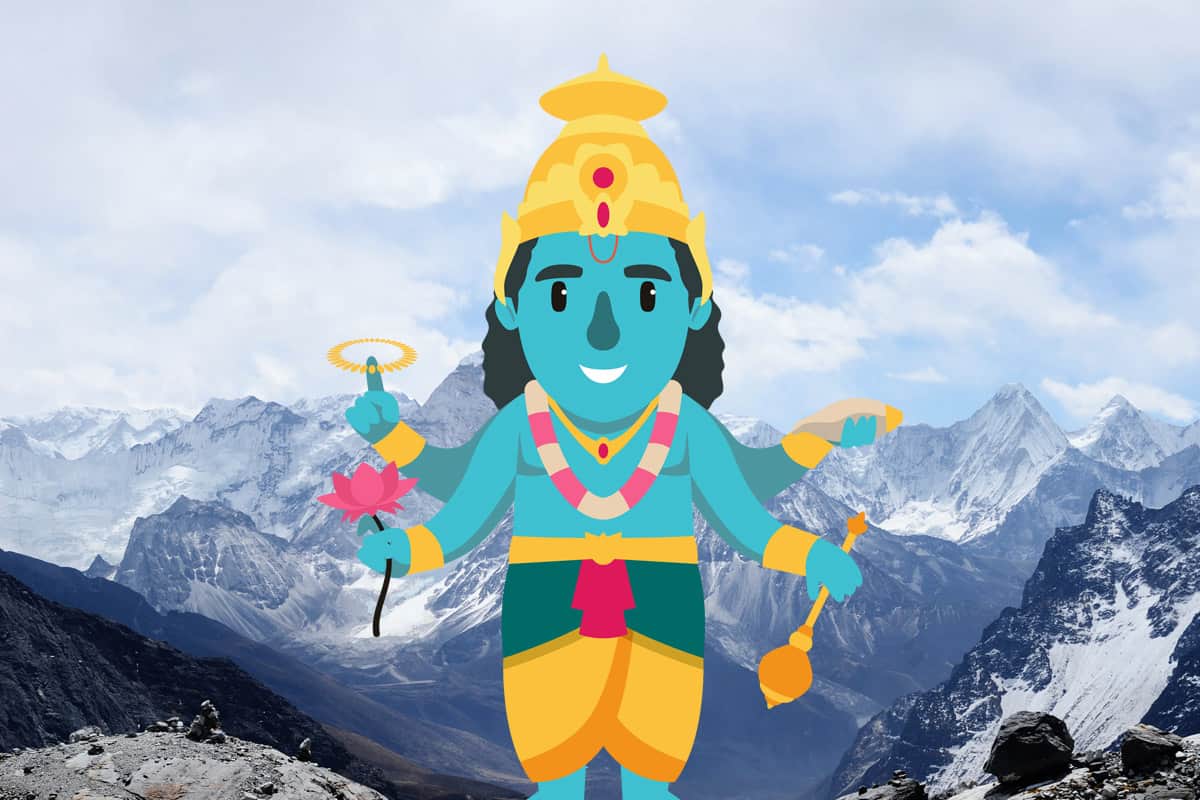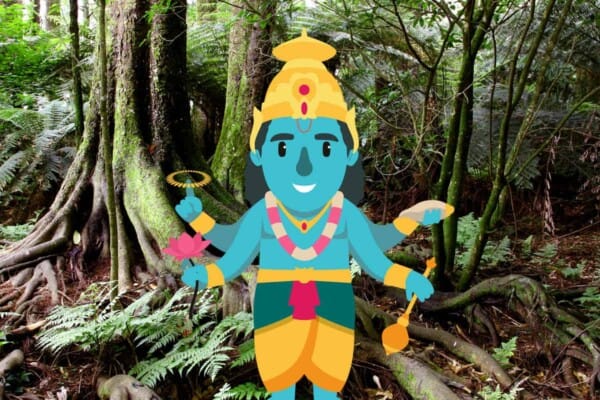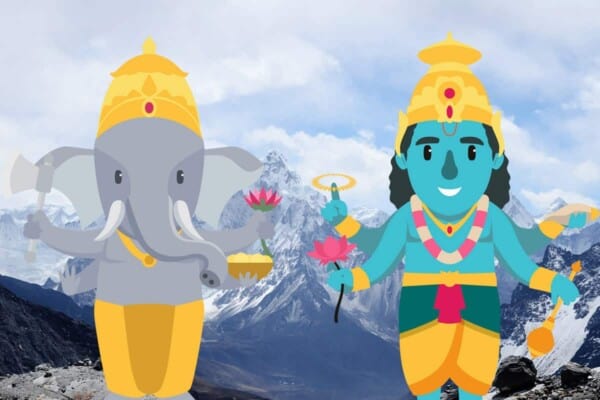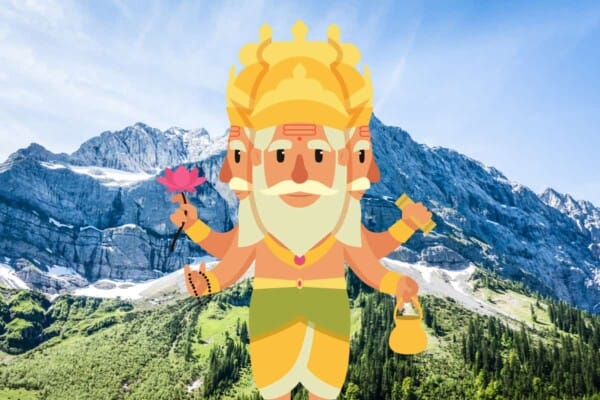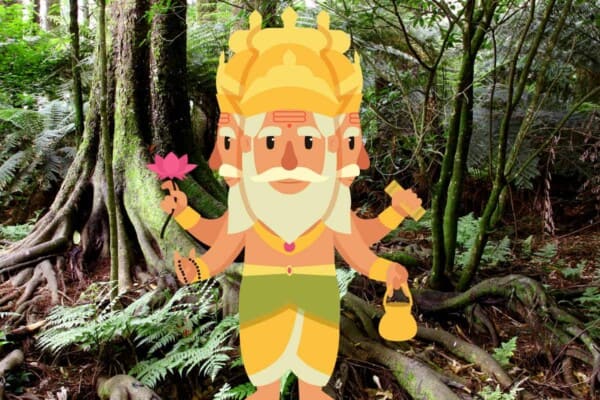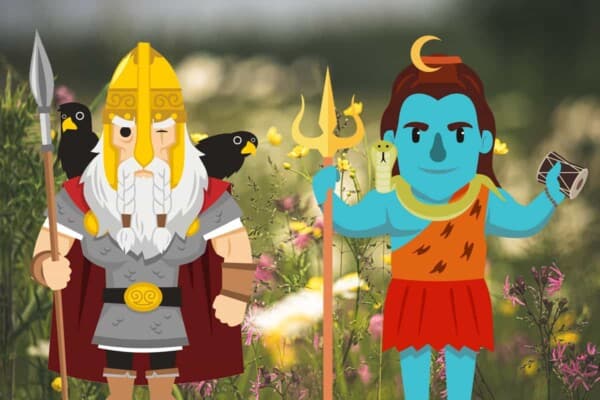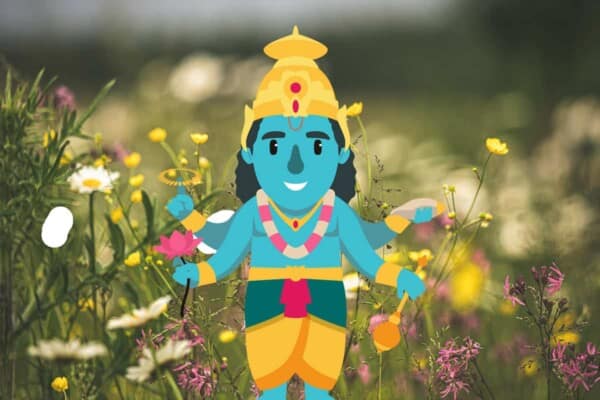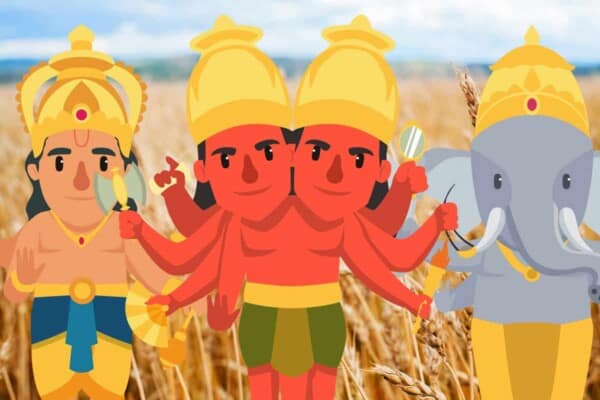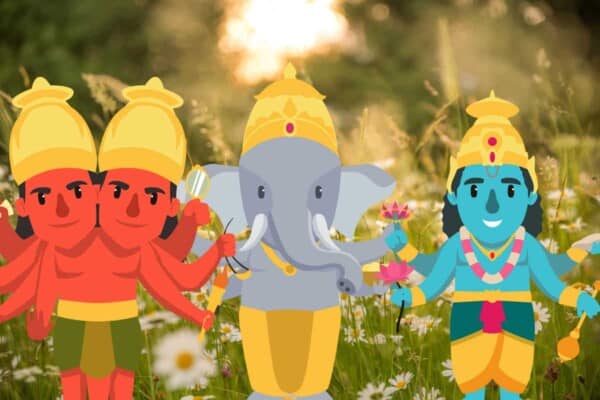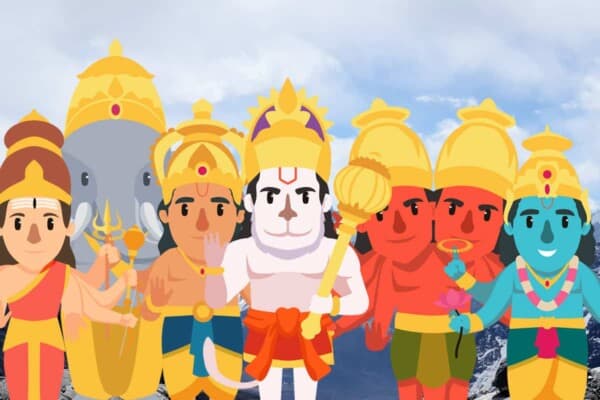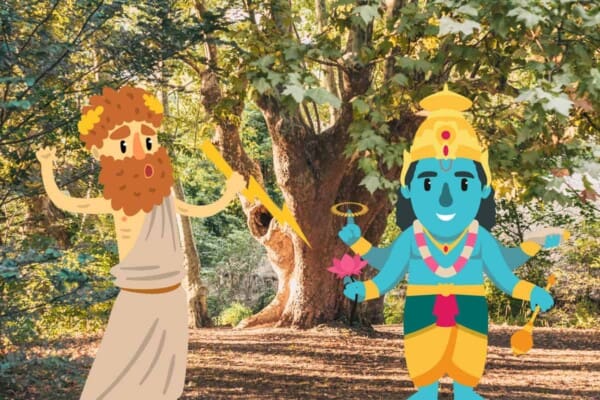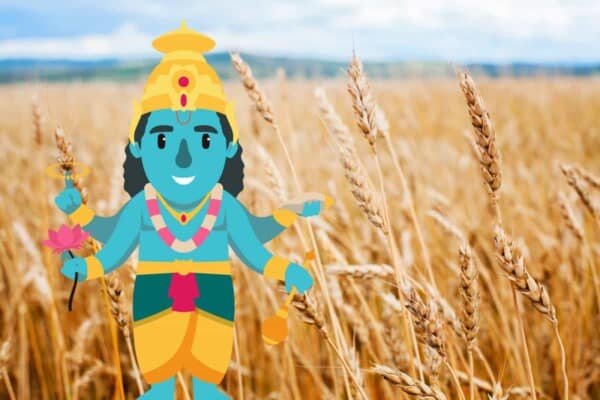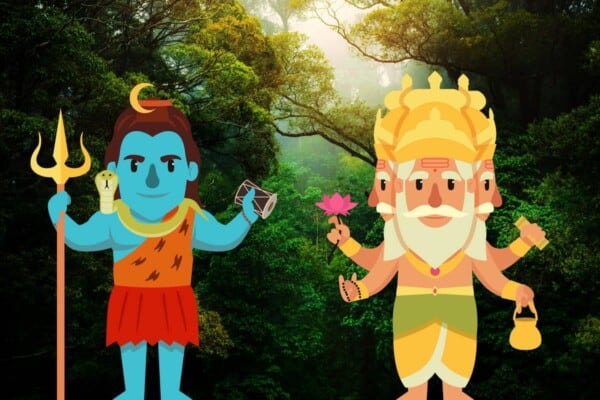Though there are hundreds of deities in Hinduism, Vishnu is one of the religion’s primary – and most important – gods.
Vishnu’s role within the Trimurti, or holy trinity of Hinduism, exemplifies his importance. While Brahma is the universe’s creator and Shiva it’s destroyer, Vishnu acts as the balancing preserver of the two forces. The existence of the universe as we know it depends on Vishnu’s ability to protect and keep the peace of the cosmos, also known as dharma. To do so, Vishnu visits the earth as avatars, or invocations of his godly self, and the avatars of Vishnu are some of Hindu mythology’s most recognized and beloved characters.
So, how did the god Vishnu journey from the ancient texts of one of the world’s oldest religions to become one of the most famous deities today?
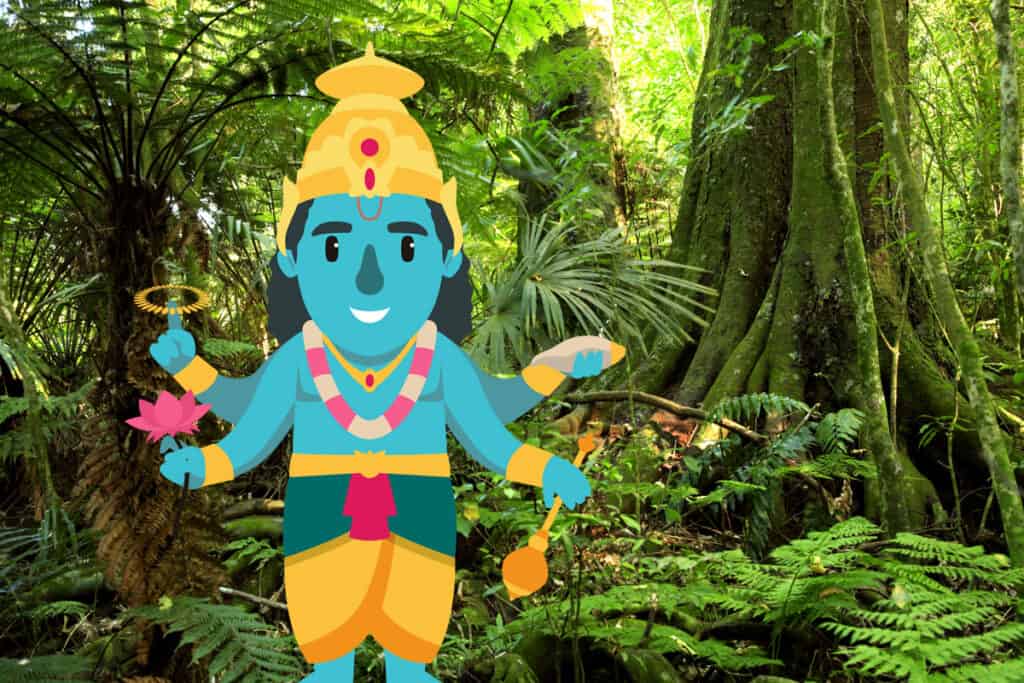
Why is Vishnu Important?
— Origin & Background
Hinduism is one of the world’s oldest religions, and Vishnu appears in the religion’s oldest holy texts, the Vedas, and in the most important, the Rig Veda. He is mentioned numerous times alongside other gods, but his profile continues to rise in prominence and popularity throughout later texts, such as the Brahamanas, cementing his status as supreme god. His avatars are featured throughout many of Hinduism’s great epic stories.
Vishnu is one of the three Hindu gods that make up the holy trinity of Hinduism, the Trimurti. The other two gods of the Trimurti are Brahma and Shiva, responsible for the creation and destruction of the world. In fact, in perhaps demonstration of his seniority, some accounts tell that Vishnu’s navel grew the lotus flower that birthed Brahma.
Vishnu’s wife is Lakshmi, the goddess of good luck, wealth, and prosperity. He is also said to have wed Ganga and Sarawati, two other goddesses, at one point, but he was unable to live with the demands of three wives and sent Ganga and Sarawati to serve as husbands to the other two gods of the Trimurti.
— Avatars
Vishnu has the most avatars of any Hindu god or goddess. Each avatar represents an incarnation of Vishnu, sent to Earth by the god himself and charged with keeping the peace or battling some evil.
Vishnu’s avatars are the heroes of many of Hinduism’s greatest legends and epics. Though Vishnu is fabled to have hundreds of half-avatars, his ten primary avatars are referred to as the Dashavatara:
- Matsya – Vishnu’s first avatar appeared as a fish and rescued the first man, Manu, from a tremendous flood.
- Kurma – Incarnated as a tortoise, Vishnu carried the churning stick on his back while the other gods worked together to churn the ocean into the elixir of immortality.
- Varaha – When the demon Hhiranyaksha dragged the earth to the bottom of the ocean, Vishnu appeared as a boar to slay the demon and carry earth back to safety
- Narasimha – Vishnu returned to earth as a half-man, half-lion to end religious persecution and restore dharma, the balance and natural social order of things.
- Vamana – the dwarf-incarnation who wrestled back control of the universe from the demon king Bali with a clever trick, asking Bali to grant him control over all the land he could travel with three steps. When his request was mockingly granted, the dwarf then grew to his god-like form and covered the earth and heaven in three paces, sending Bali to the underworld.
- Parashurama – Born of the priestly class, warrior on earth, this ax-wielding avatar fought the Kshatriya class, who were abusing their status, weapons, and power to rule unjustly. Over the course of 21 years, he destroyed the class and restored the balance of power.
- Rama – Perhaps one of the most glorified heroes of Hindu mythology and symbol of reason and virtue, Rama is the famed seventh incarnation of Vishnu. One of the greatest Indian epic stories, the Ramayana, recounts how Rama rescues his wife, Sita, from the demon king Ravana. The reunion of Rama and Sita serves as the quintessential example of marital fidelity and devotion.
- Krishna – Known for his good nature and mischievous pranks, Krishna grew up in exile as a humble cowherder before he returned as a man to retake the kingdom of Mathura from his vengeful uncle. After killing his uncle in combat, dharma was restored. His victories are chronicled in the Indian epic, the Mahabharata.
- Buddha – In Hinduism, Vishnu appears a ninth time as Guatma Buddha, or the famous and historic Buddha, to purify the Hindu religion. His teachings are later codified to be the basic tenets of those who follow Buddhism.
- Kalki – The purported tenth and final avatar of Vishnu, Kalki’s appearance will mark the end of the present world. He will arrive to destroy the wicked and unjust once and for all and usher in a new golden age for humanity. Prophecies tell of Kalki riding on a white horse with a sword in his hand.
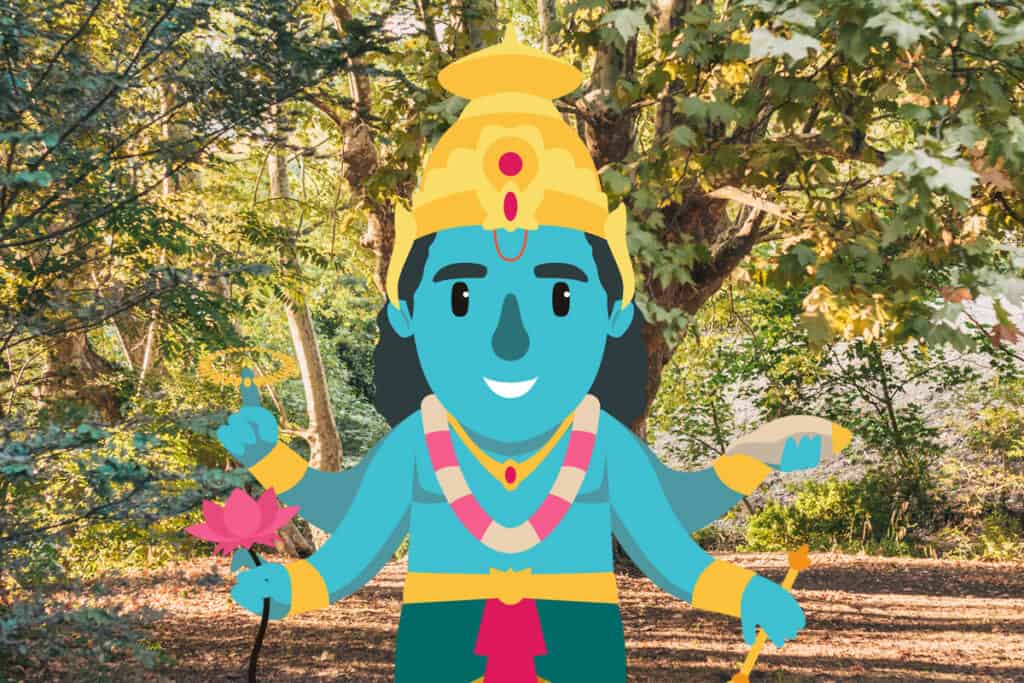
— Modern Legacy
Vaishnavism is the largest sect of Hinduism and is practiced today by more than 2/3 of Hindus. Within this sect, Vishnu is the supreme God; without Vishnu, there would be no Vaishnavism for 650 million Hindus to follow!

